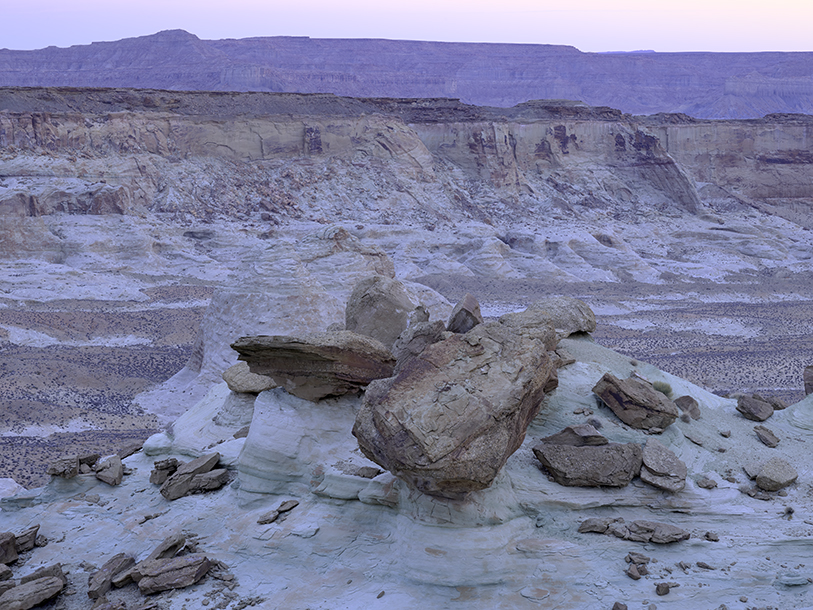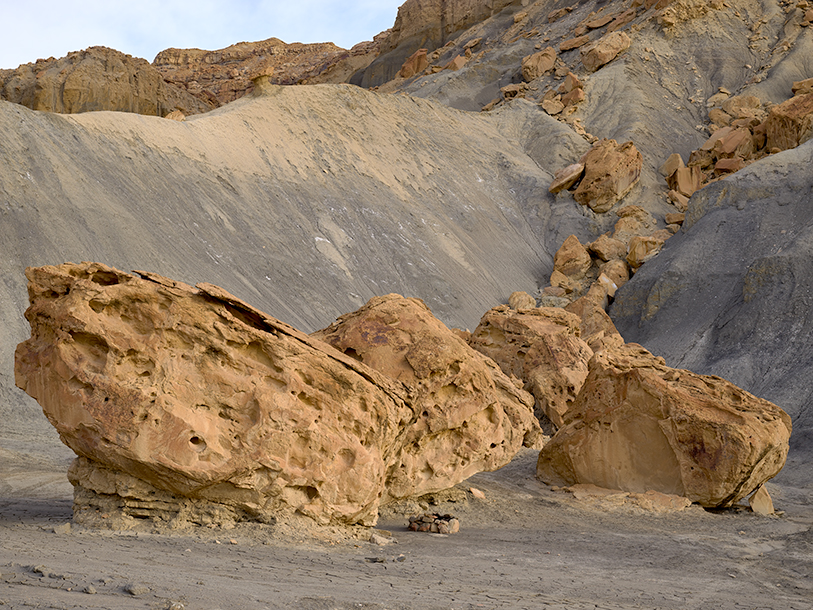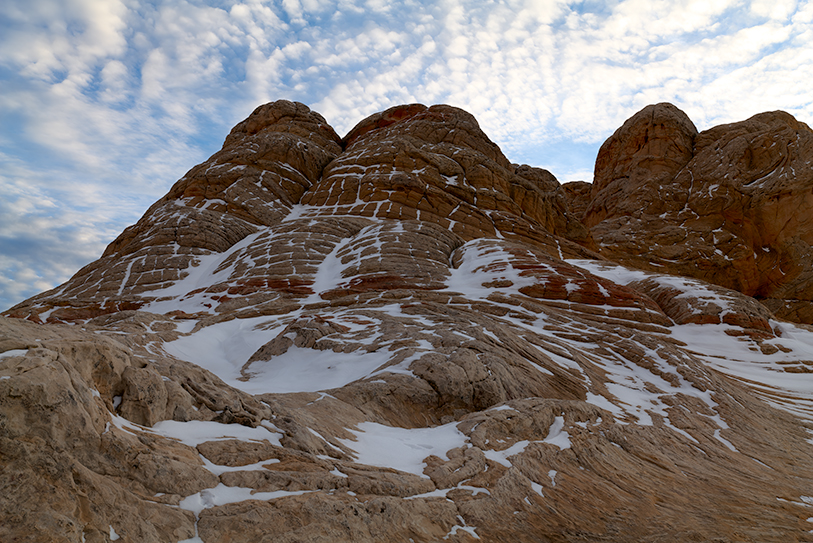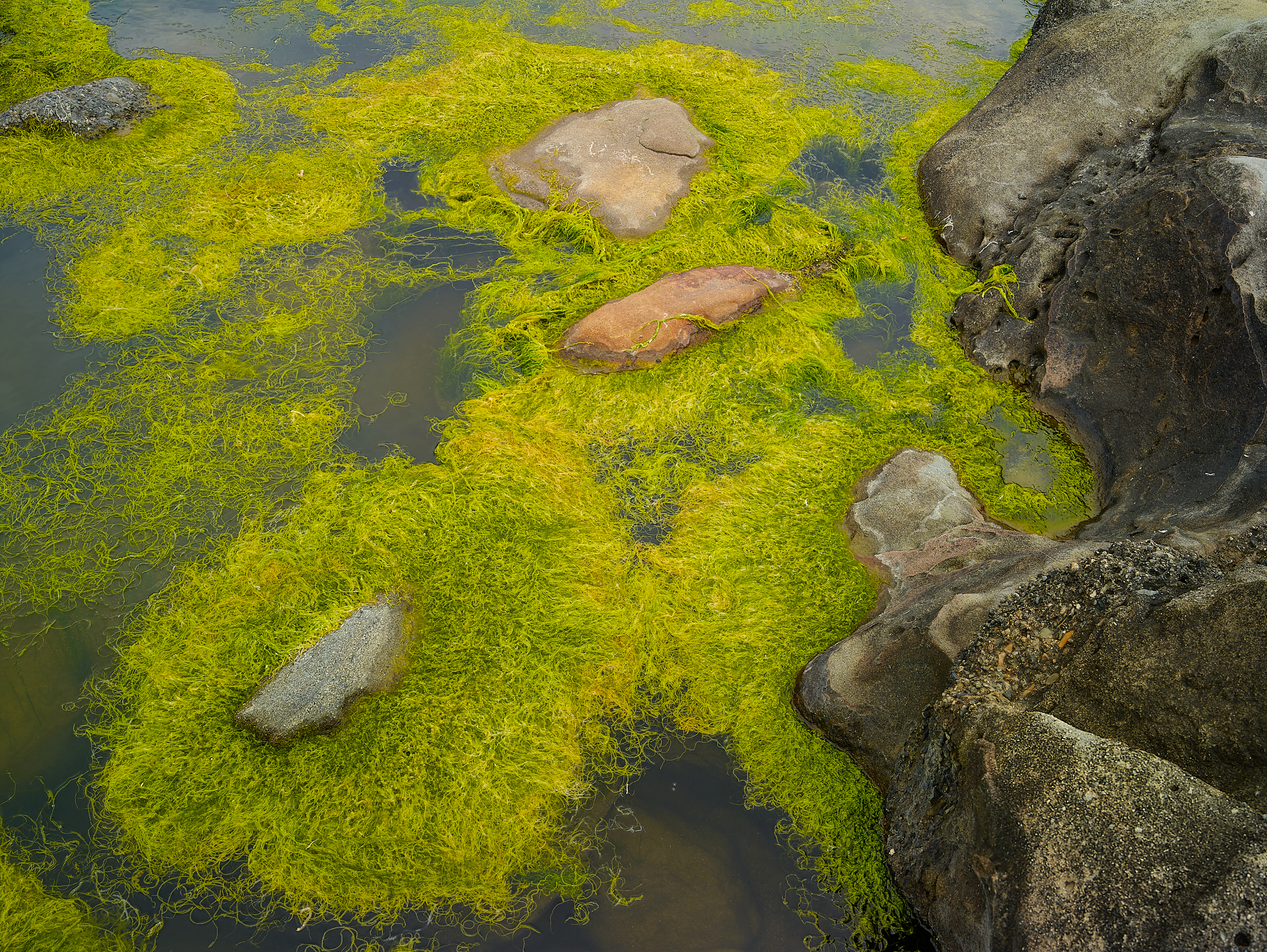Introduction
The natural wonders of Planet Earth are amazing and awe inspiring.
The sheer variety of Natural Formations in terms of shapes, sizes, colors, materials and the way each of them reacts to light is interminable. I do not believe that any of us will have the opportunity to observe and enjoy even a fraction of what the Earth has to offer in our lifetimes.
As I was pondering these thoughts while traveling to a few places with amazingly beautiful natural formations that were new to me, I decided to share my thoughts and a few images in this article.

Sunrise Moonset.
PhaseOne XF/IQ4 150 with 150 mm lens
From Another Planet…
I find it fascinating when I hear individuals looking at a natural formation or a landscape that is new to them say that it looks like a different planet. I also constantly encounter people who express the exact same thought verbally or in writing when they see a photograph of a landscape or a formation that is different from others they have seen.
I do not know why this reaction is so common and I would venture to guess that folks who study the human mind may have an answer to this question.
I used to have the same reaction, but I believe that a more proper reaction is awe, inspiration and respect for what we have right here in our own little planet. I have trained myself to have this reaction instead.
Our little home in a nondescript average corner of this vast universe simply boggles my mind with its diversity, beauty and constant surprises.

Suspended Rocks
PhaseOne XF/IQ4 150 with 150 mm lens
Writing With Light
The word “Photography” literally leans writing with light. I cannot think of a term that applies more accurately to capturing and printing images from beautiful formations on earth.
I believe most photographers have heard the terms “decisive moment” or “magic moment”which are widely used to describe the precise moment in which a photographer releases the shutter to capture a human expression or a moment in sports or a wild animal image. Releasing the shutter at the right moment is crucial for these kinds of subjects, but I find that it is crucial to producing a good photograph in general, and this definitely includes landscape photographs.
It’s impossible for me to remember how many times I have given up on releasing the shutter after traveling to a location, setting up the camera and then finding out that I picked the wrong time of year, or the wrong time of day, or the light just was not right that day, or the weather does not cooperate in other ways, etc.
By the same token, I cannot remember how many times I have encountered the right moment in landscape photography when the weather conditions, the time of year, the time of day, the cloud formations and all key elements for the image create a confluence that makes a natural formation or a landscape visually special. I would like to emphasize that the vast majority of the time these magic moments last a very short time, typically between a fraction of a second and a few seconds.
Extreme patience in setting up the camera and then waiting for the light, or the wind, or the water, or the clouds, or some other key element to be just right, combined with quick reflexes to release the shutter at the right moment are all critical to landscape photography. Capturing the magic moment is just as important in landscape photography as it is in people photography or wild animal photography.
I bring this up, because most of the natural formations I have recently photographed have required a lot of patience with the light and perfect timing in releasing the shutter at the right moment. A case in point is the image of the “Sunrise Moonset above”. The moon was moving so fast and the light was changing so fast, that had I released the shutter just a couple of seconds earlier or a couple of seconds later, I would have completely missed the shot.
For this type of photography, the best description of a successful capture experience I can come up with is the joy of scouting a location and discovering a beautiful formation, followed by choosing the time of year and the time of day to photograph it; then showing up at that time, setting up the camera and waiting for nature to paint the light on the formation. If I have the good fortune of nature cooperating and am able to make an exposure at the right moment, the experience is powerful enough that it produces an adrenalin rush.. I have been known to jump for joy right after the exposure is made.

Rock March
PhaseOne XF/IQ4 150 with 50 mm lens
Some Thoughts About Location
I have been struggling for a while with the question of whether to continue to disclose the location of my images. I would like to point out 3 examples of why I have been struggling with this:
- Most people do not realize that they have Geotagging turned on by default in their smart phones and cameras. So, for example, tourists who photograph a Rhino in Africa and post the photograph in social media, de facto give Poachers the information that allows them to find the animal and kill it.
- A photography/nature magazine disclosed the location of a beach where endangered sea turtles laid their eggs in the sand. As a result, the beach has been completely overrun by tourists and sea turtles are no longer able to lay their eggs in that beach.
- Disclosure of the location of some of the most special places on earth has resulted in irresponsible individuals damaging the soil, defacing rocks, disturbing or killing animals, damaging archeological sites, destroying the land and the vegetation with vehicles, and causing irreparable damage in a myriad of other ways.
In view of the above, I have decided that I will no longer publish the location of my photographs. I would also like to urge anyone interested in conservation and/or the preservation of pristine areas to be mindful and very careful with geotagging information on smart phones and other photographic devices.

Checkered Mountain
Leica SL-2 with 35 mm APO Summicron lens
Final Thoughts
The next time you see a beautiful formation, think about it as a gift from this planet as opposed to something from another planet. If you would like to photograph it, be patient, do not forget that you are painting with light and the light as well as the moment of exposure are critical to produce a beautiful image.
It is very important to also think ahead of time in terms of what message and what feelings you are trying to transmit to the viewer and how you want to represent it in your images.
This should be combined with planning what the final product is going to be. In other words, are the photographs going to be presented as framed fine art prints? Are they going to be used for a book? A commercial product? Web use only? Something else?
If you are planning to make prints, it behooves you to pre-plan the general size range, the kind of paper and printer you are going to use and other relevant parameters.
I have mentioned many times in prior articles that knowing what you want to do and having a plan ahead of time is crucial to create good photographs. It affects everything, from determining what equipment you use, to the focus of your brain and visual system which directly influences how you shoot and edit your images, as well as how you present them as a final product.
Going out in the field without a pre-conceived plan and shooting at random, simply does not work as well as having a specific idea and focus before you start photographing.

The Raceway
Leica SL-2 with 35 mm APO Summicron lens
My parting thought for now is that even if the light does not cooperate and you do not capture that magic image, just being there is a privilege that makes it all worth it. Always enjoy and savor the privilege.






Your Thoughts